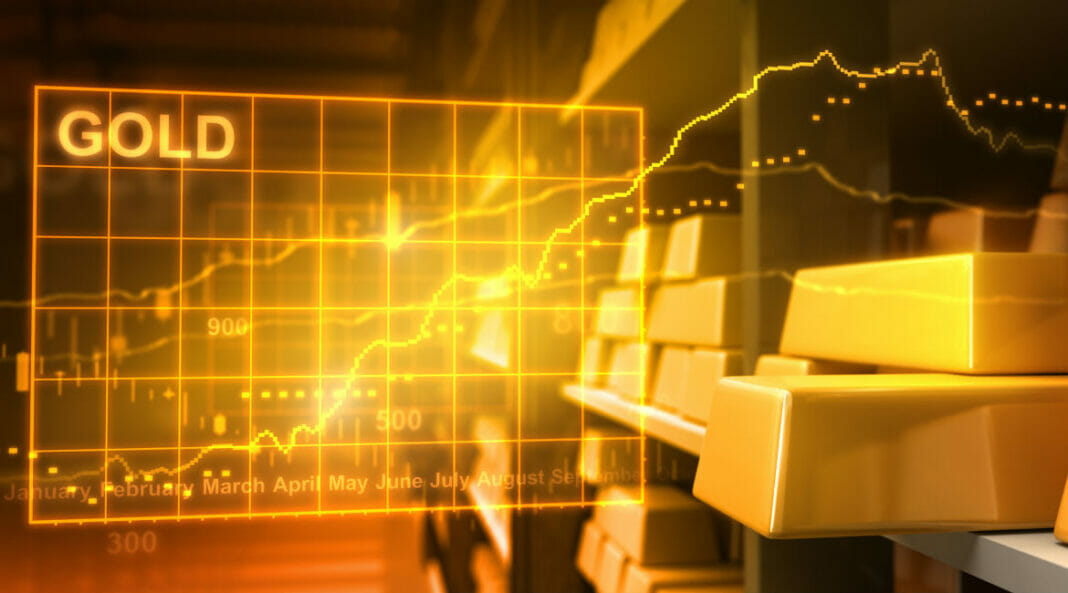The yellow metal trades higher against a weakened dollar
For a brief time, at the end of November, the price of gold was above $2,000 per ounce. Gold metal bullion is considered a financial refuge in times of uncertainty and its rising price reflects the weakness of the US currency in the current situation.
In a series of insights and predictions from prominent financial analysts, gold has been highlighted as a key player in upcoming economic changes. Gold is not only reaching record levels, but is also positioned for potential future gains amid global economic shifts.
Peter Schiff’s Bold Prediction About Gold and the US Dollar
On November 28, renowned financial commentator Peter Schiff predicted a historic gold breakout, combined with a sharp drop in the US dollar. Schiff foresaw this as a pivotal moment for the Federal Reserve and the economy, expecting inflation, interest rates, and unemployment to skyrocket. Schiff ruled out the possibility of a soft landing and anticipated a “crash and burn” scenario.
He predicted that once gold breaks the $2,100 mark, it would not face any significant resistance, leading to rapid increases in value. Schiff’s analysis indicated the fall of the dollar and the rise of gold as the world seeks refuge from inflation.
Analysis by Mike McGlone
The next day, Mike McGlone, senior commodities strategist at Bloomberg Intelligence, shared his outlook on gold, which could approach $3,000, with copper falling to $3 in 2024. He highlighted a trend favoring gold over copper, indicative of a global recessive trajectory. possibly concluded after a period of central bank easing.
Schiff’s Follow-Up on Gold Performance
On November 30, Schiff noted that although gold had not reached a new record, it achieved its highest monthly close in history, ending a month above $2,000 an ounce for the first time in history. He considered this an important milestone, indicating the likelihood of much higher prices soon.
CNBC Report on Gold’s All-Time High
On December 1, CNBC reported that gold prices had hit an all-time high, boosted by comments from Federal Reserve Chair Jerome Powell that boosted trader confidence about the end of the Reserve’s monetary tightening. Federal. Spot gold rose to $2,069.10 an ounce, and US gold futures also hit a record high of $2,089.7.
Despite these nominal records, CNBC noted that, on an inflation-adjusted basis, gold’s true all-time high was in 1980, equivalent to $3,452.40 today. Tai Wong, an independent metals trader, and Suki Cooper, an analyst at Standard Chartered, provided insight into the market’s reaction to Powell’s comments and the potential overbought state of gold prices.
Lower interest rates, falling Treasury yields and a weaker dollar were cited as factors boosting gold’s appeal, with expectations the rally will continue through the end of the year, according to Everett Millman, chief analyst. Gainesville Coins Market.
Schiff Comments on Discrepancy Between Gold Prices and Mining Stocks
On December 1, Schiff provided additional information and pointed out an intriguing anomaly in the market. Despite the significant rise in gold prices, with a rise of $35 and a record close, gold mining stocks saw a comparatively smaller percentage increase.
Schiff interpreted this as a sign of extreme bearishness in the market. He noted that gold continues to climb what he called a “classic wall of worry,” noting that gold stocks would still need to rise 12% to hit a 52-week high.
By Audy Castaneda











